Today we’re talking about a destination we highly recommend including in your South Korea itinerary: Gyeongju, the former capital of the Silla Kingdom. It’s one of those places travelers remember fondly long after their visit.
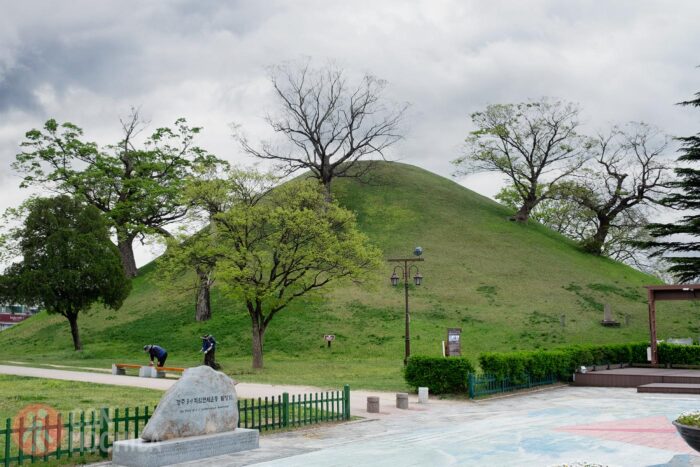
Historic, colorful, entertaining, and comfortable, Gyeongju offers many of the things people seek when visiting South Korea—green spaces, temples, hanok villages—a perfect blend of culture, nature, and history. Continue reading to discover what to see in Gyeongju.
If the Silla Dynasty ruled Korea for nearly a thousand years, it’s no surprise their legacy can be found on every corner, especially in Gyeongju. The Burial Mound Park contains the ancient tombs of kings, nobles, and royal family members from that era.
Each of those grassy hills you see (reminiscent of the Chocolate Hills in Bohol, Philippines) is actually a royal tomb, where the most prominent members of the Silla family now rest.
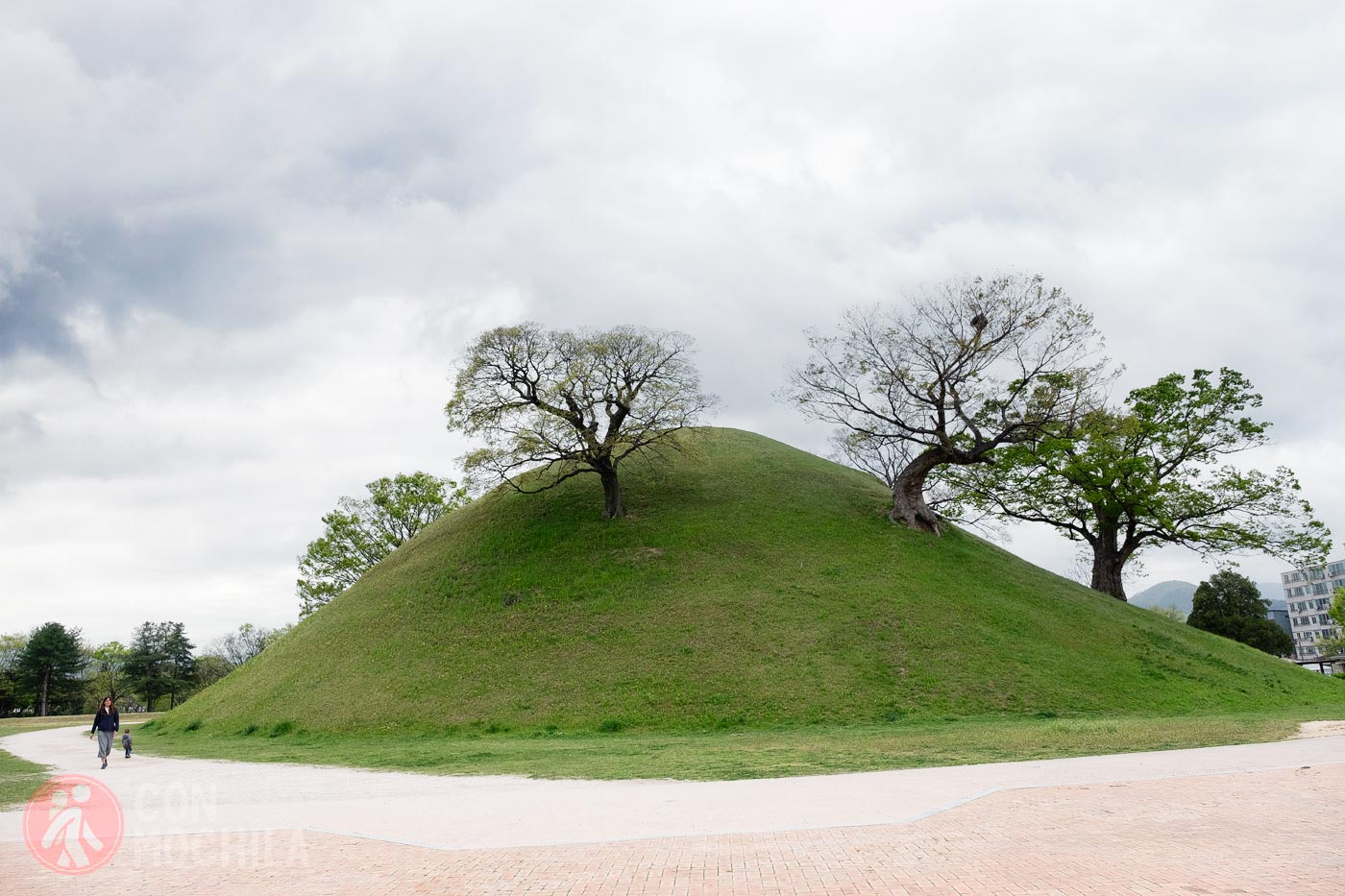
It might be hard to imagine there’s anything beneath those mounds, but that doubt quickly vanishes once you visit the Geumgwanchong Tomb and the Silla Dynasty Tombs Information Center—two adjacent attractions that explain it all in detail.
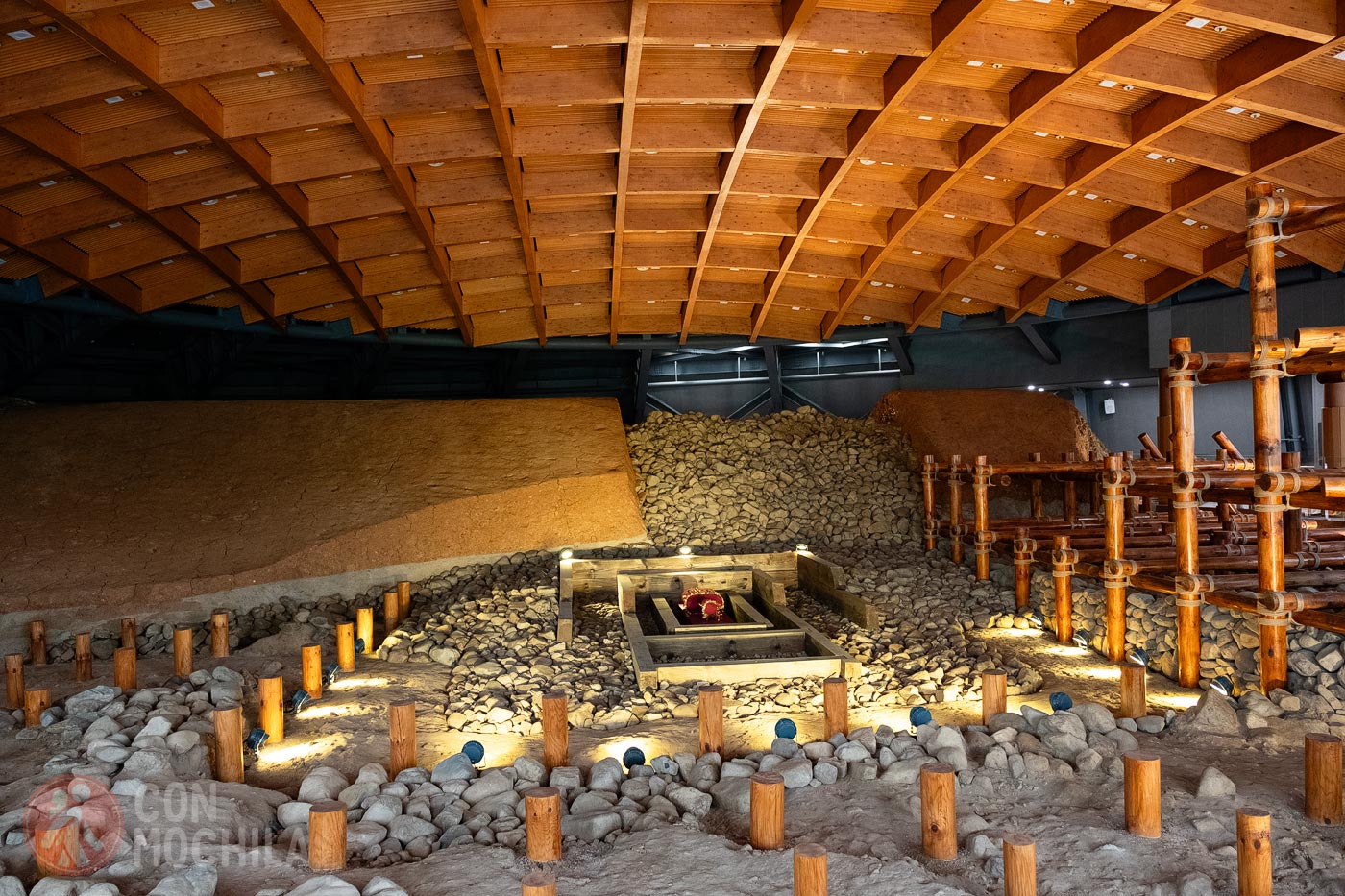
Even kids can have a great time here, as there are interactive exhibits and activities designed especially for them.
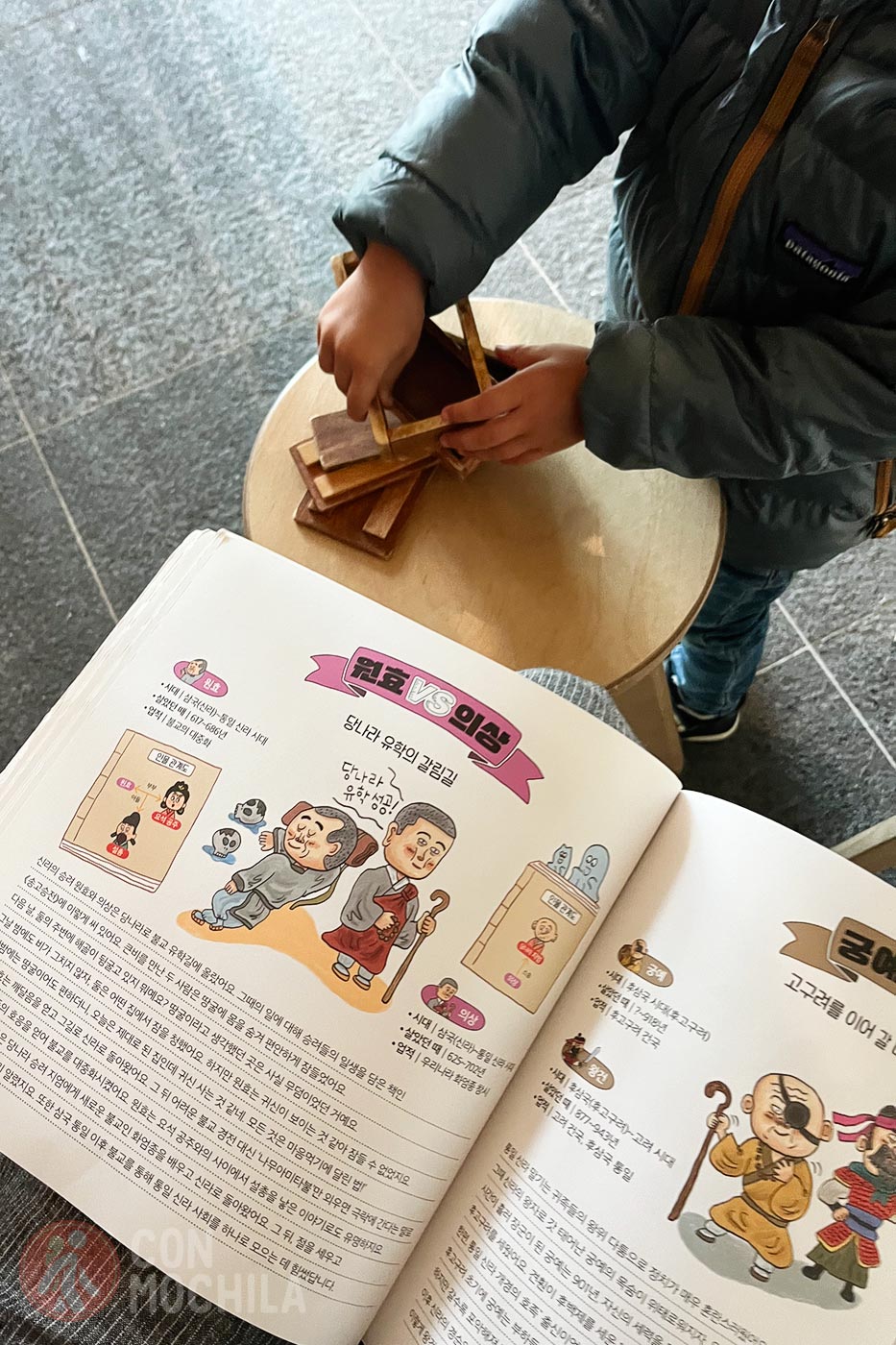
Take your time to explore the whole park and make your way toward the lotus garden and flower park. On your walk, you’ll come across various tombs and historical spots, like this next one.
You might read that Cheomseongdae Observatory is the oldest observatory in East Asia, and imagine something monumental. But when you finally see it, you might think, “Wait… that’s it?”
It’s not particularly large or flashy, but since it’s close to many other attractions, you’ll likely pass by it anyway.

Even though it’s not breathtaking at first glance, try to imagine ancient astronomers observing the stars from here hundreds of years ago.
And if you dig a little deeper, you’ll learn that the stones aren’t randomly placed—their arrangement symbolizes days, months, and the lunar calendar. Fascinating, right?
Of course, no visit to Gyeongju is complete without a stroll through a traditional village—and yes, Gyeongju has more than one (we’ll talk about the other later).
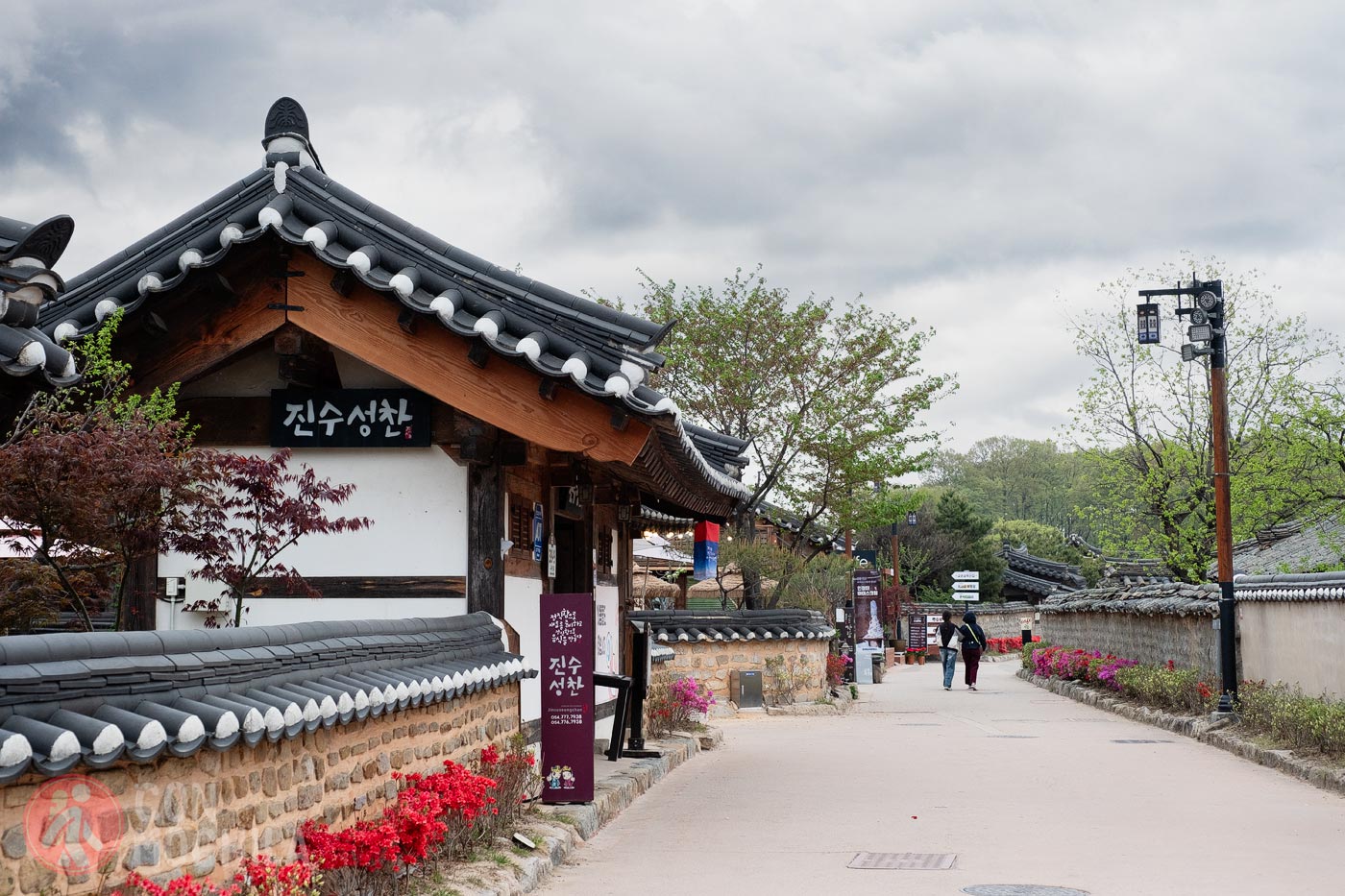
Just south of the park and along the riverbank, you’ll find Gyochon Village, a charming hanok neighborhood where you can wander narrow alleys, sip tea, and admire how carefully preserved everything is.
While you’re there, don’t miss the House of the Choi Clan, a family said to have maintained its wealth for twelve generations.
Continue your walk along the river heading east and you’ll soon arrive at the Woljeonggyo Bridge. At 70 meters long, it’s the largest wooden bridge in South Korea.
Even though it’s a modern reconstruction, nobody seems to mind. In fact, you’re likely to witness a photo shoot or a couple in traditional attire—a sight Koreans truly seem to enjoy.
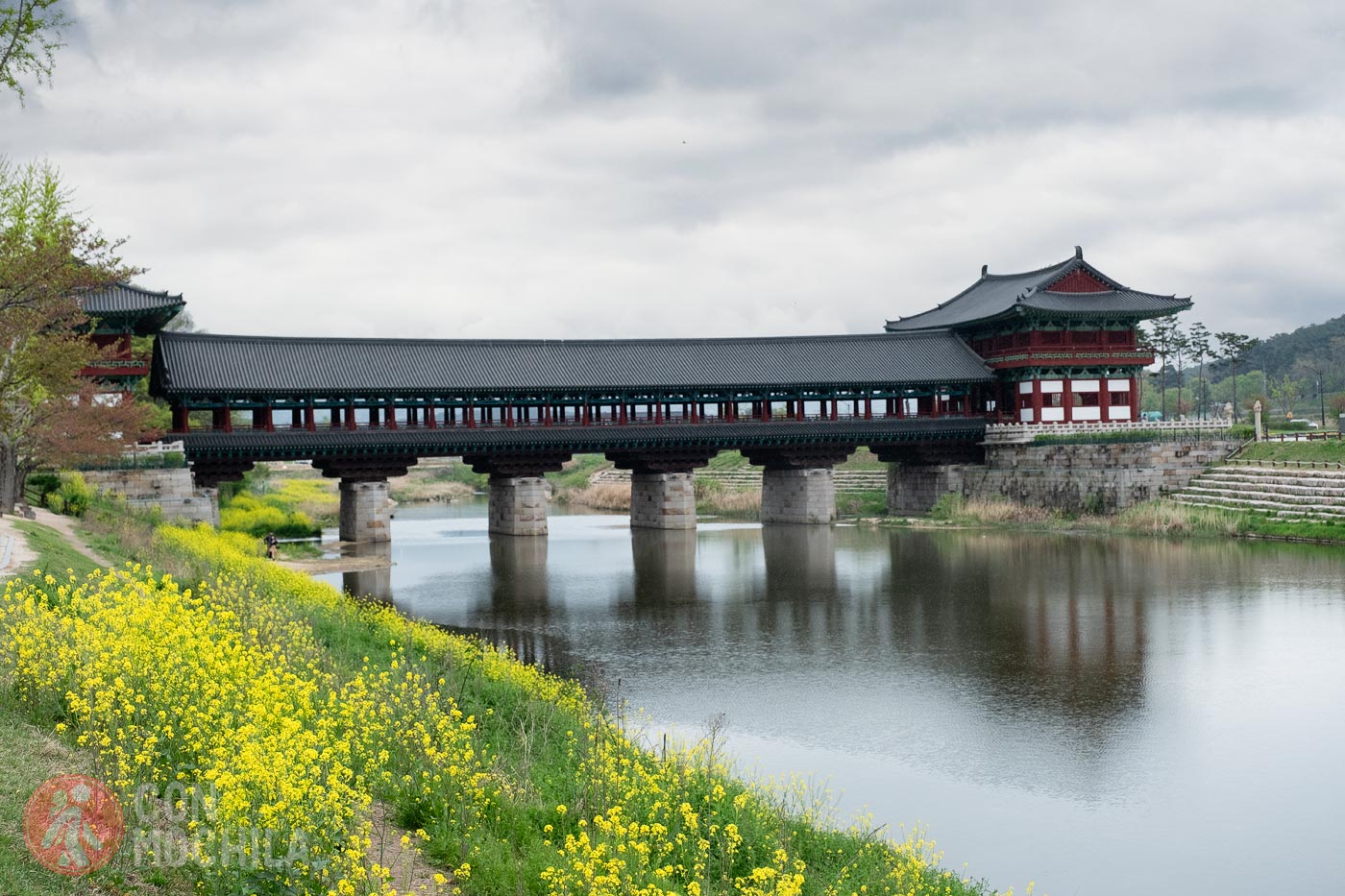
We continue our walk and share more things to see in Gyeongju—this time, Donggung Palace and its Wolji Pond, a secondary palace used for banquets when important guests visited, built by order of King Munmu in 674.
Today, you can stroll through the various pavilions and walk around the pond on a pleasant visit that takes no more than 20–30 minutes.
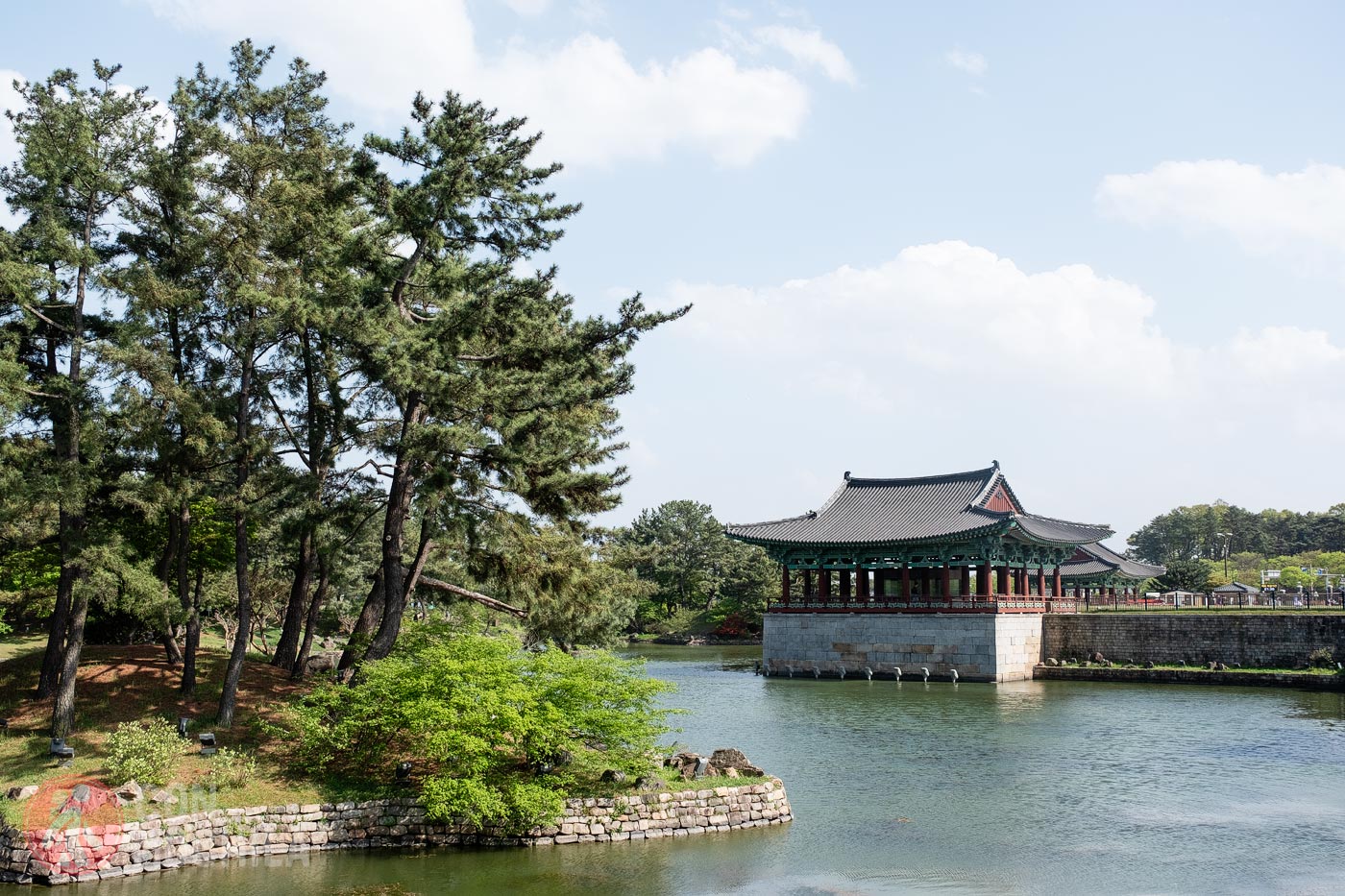
The pond was dredged in 1974 as part of a restoration project, and many of the relics found there are now housed in the Gyeongju National Museum.

Another temple complex from the Silla era is Bunhwangsa, a UNESCO World Heritage Site. Built in the 7th century during the reign of Queen Seondeok, it’s home to the oldest surviving pagoda in South Korea.
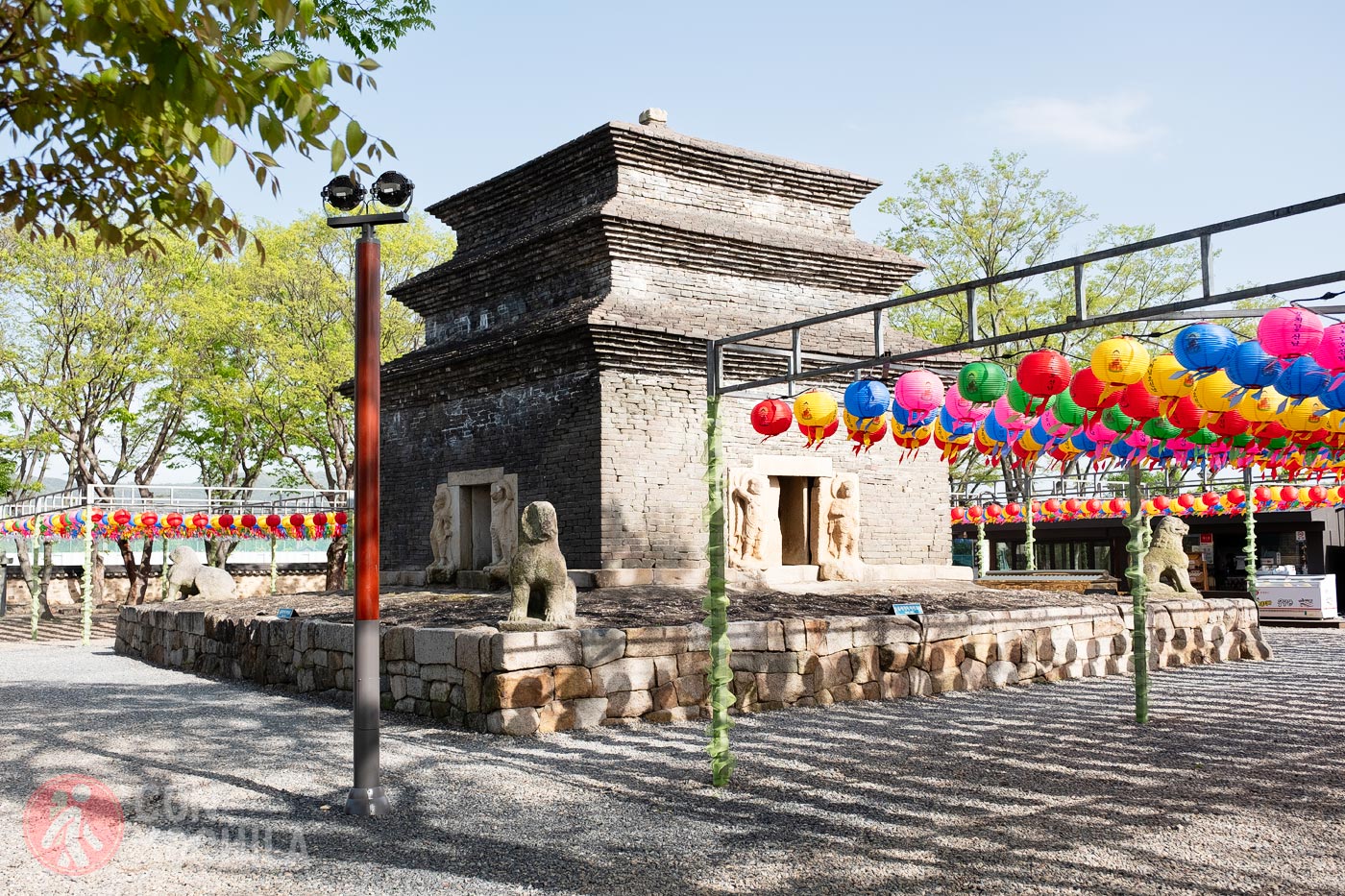
As you know, one of our top recommendations is always to visit a local market—places where you can see, smell, touch, taste, and talk.
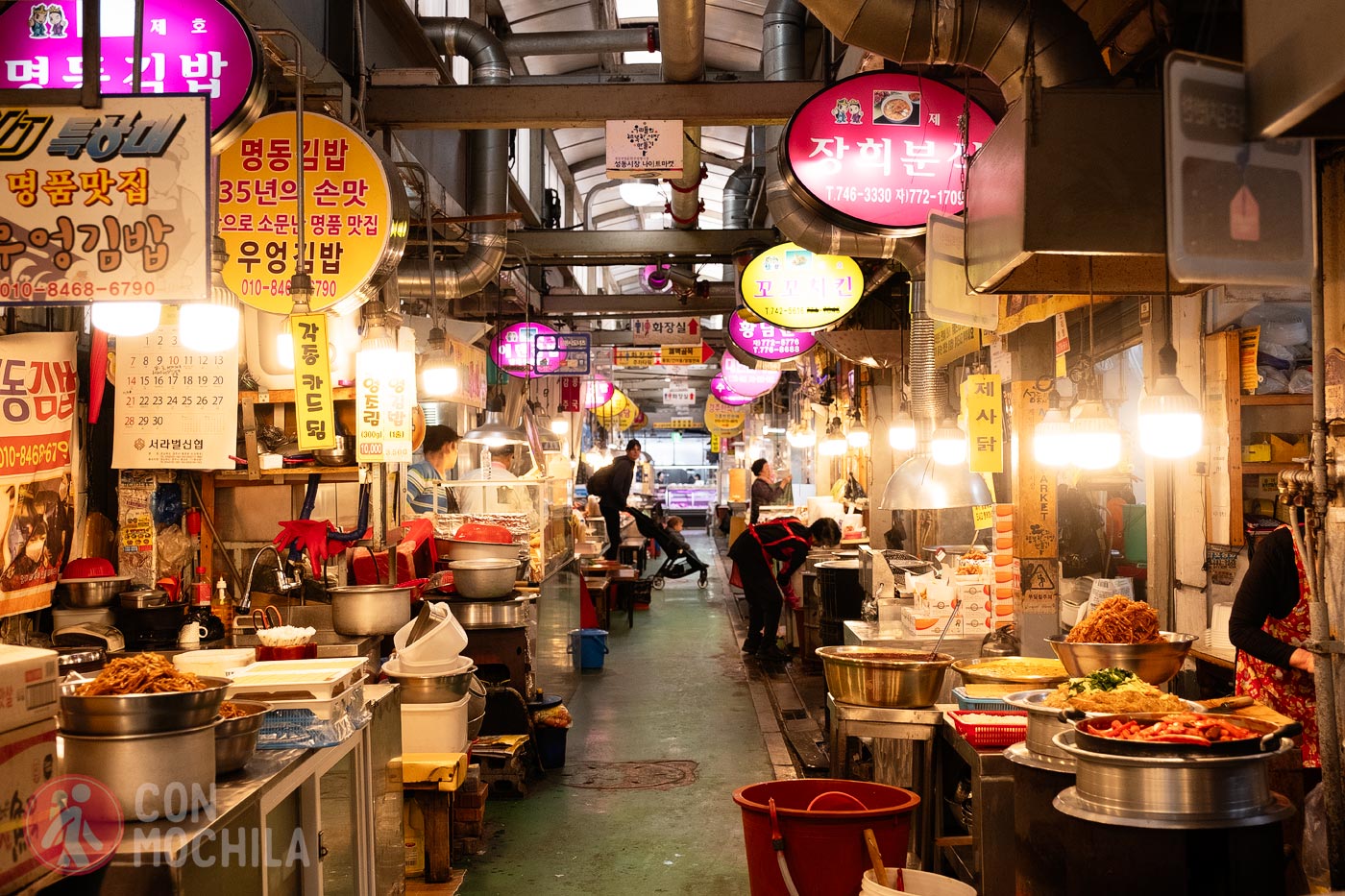
In Gyeongju, don’t miss Seongdong Market, a maze of narrow alleys where, in addition to food, you’ll find all kinds of items.
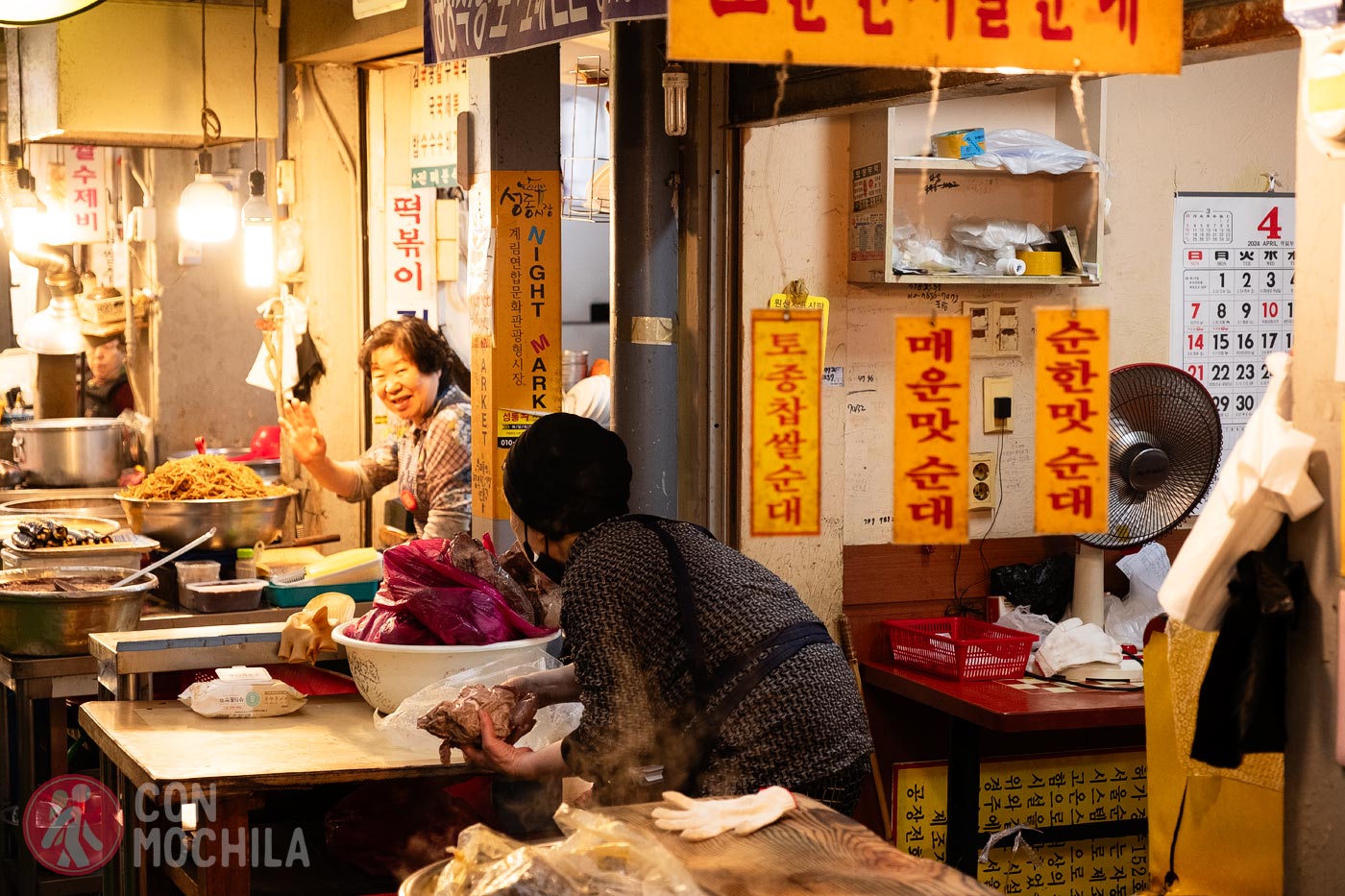
Although the city is often described as an open-air museum, it’s always worth diving deeper into the local history and culture in a traditional museum setting.
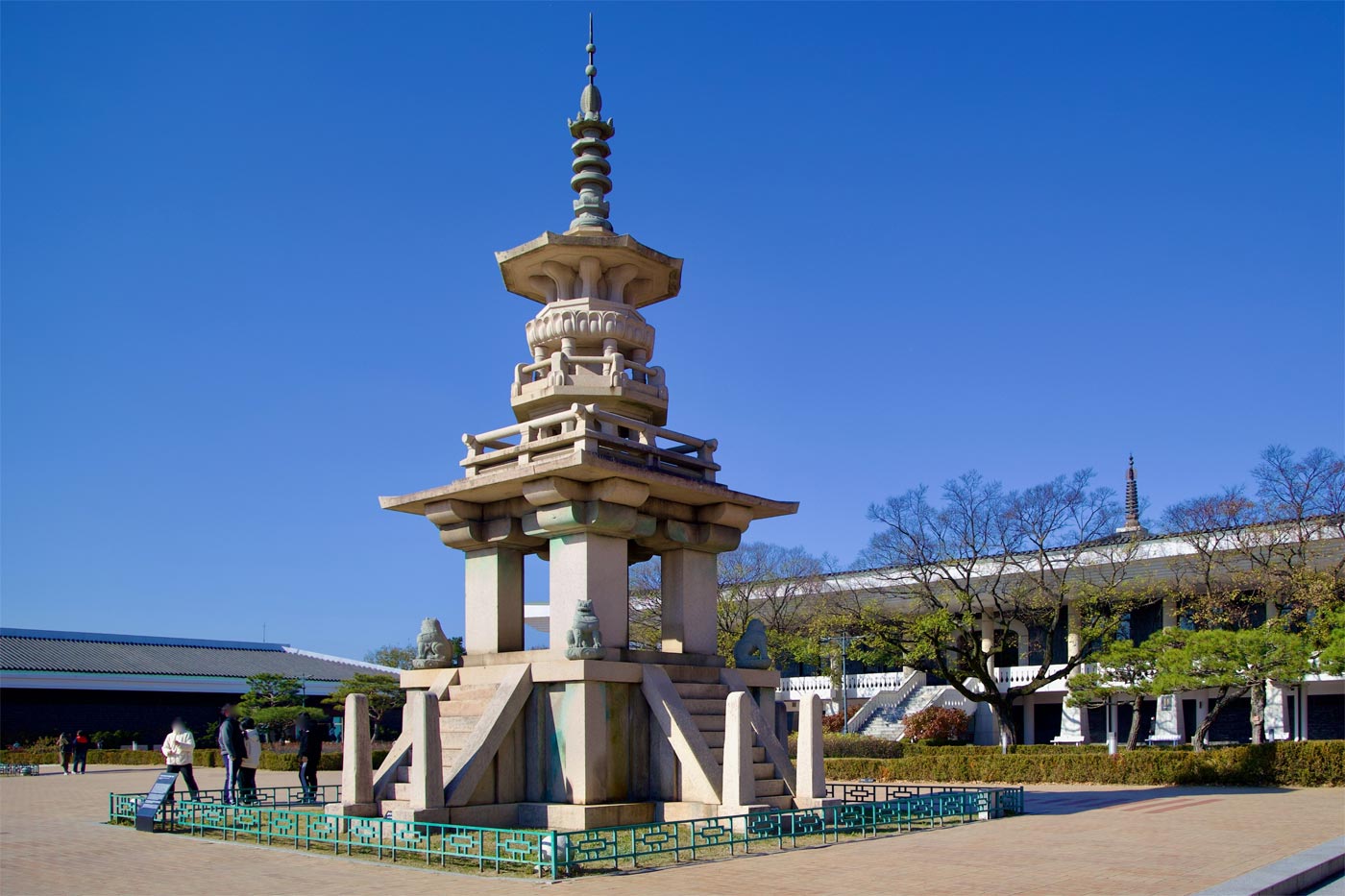
In Gyeongju, you’ll find the famous National Museum, where you can explore relics recovered from Wolji Pond, Silla crowns, and artifacts from the Hwangnyongsa Buddhist Temple.
Much of Bulguksa Temple was rebuilt, as little of it remained after the Japanese invasions. But after rising from the ashes, it earned its World Heritage status. Among the cultural treasures preserved here are the Seokgatap and Dabotap stone pagodas—both designated National Treasures.
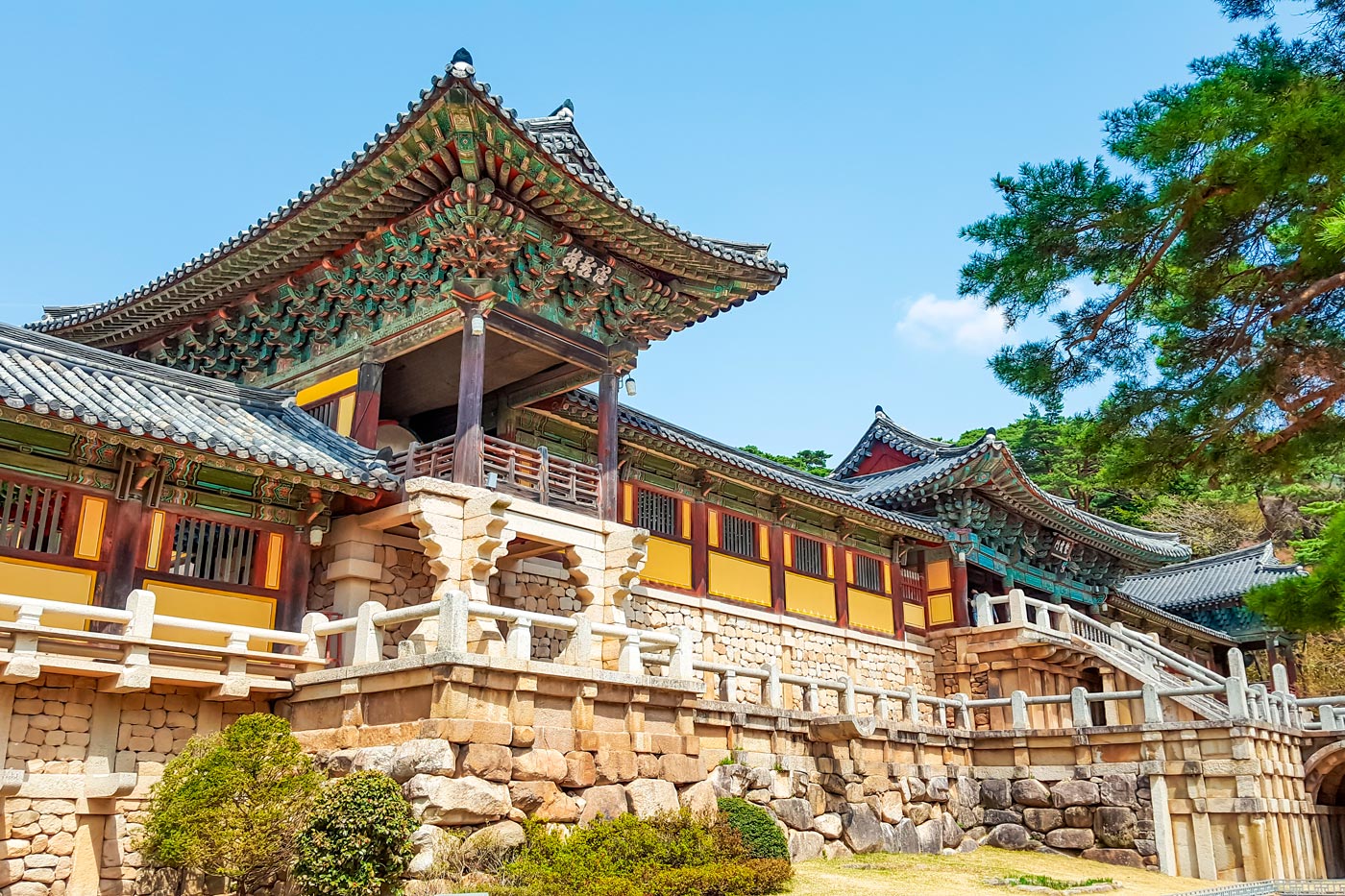
To visit the temple, you’ll need to take a day trip from Gyeongju, but it’s easy to get there by bus.
This stone temple, located on the slopes of Mount Tohamsan, is a man-made Buddhist grotto housing a massive Buddha statue facing the sea, seated in the Bhumisparsha mudra. Visitors often combine this site with a visit to Bulguksa Temple, as both are typically included in the same tour.
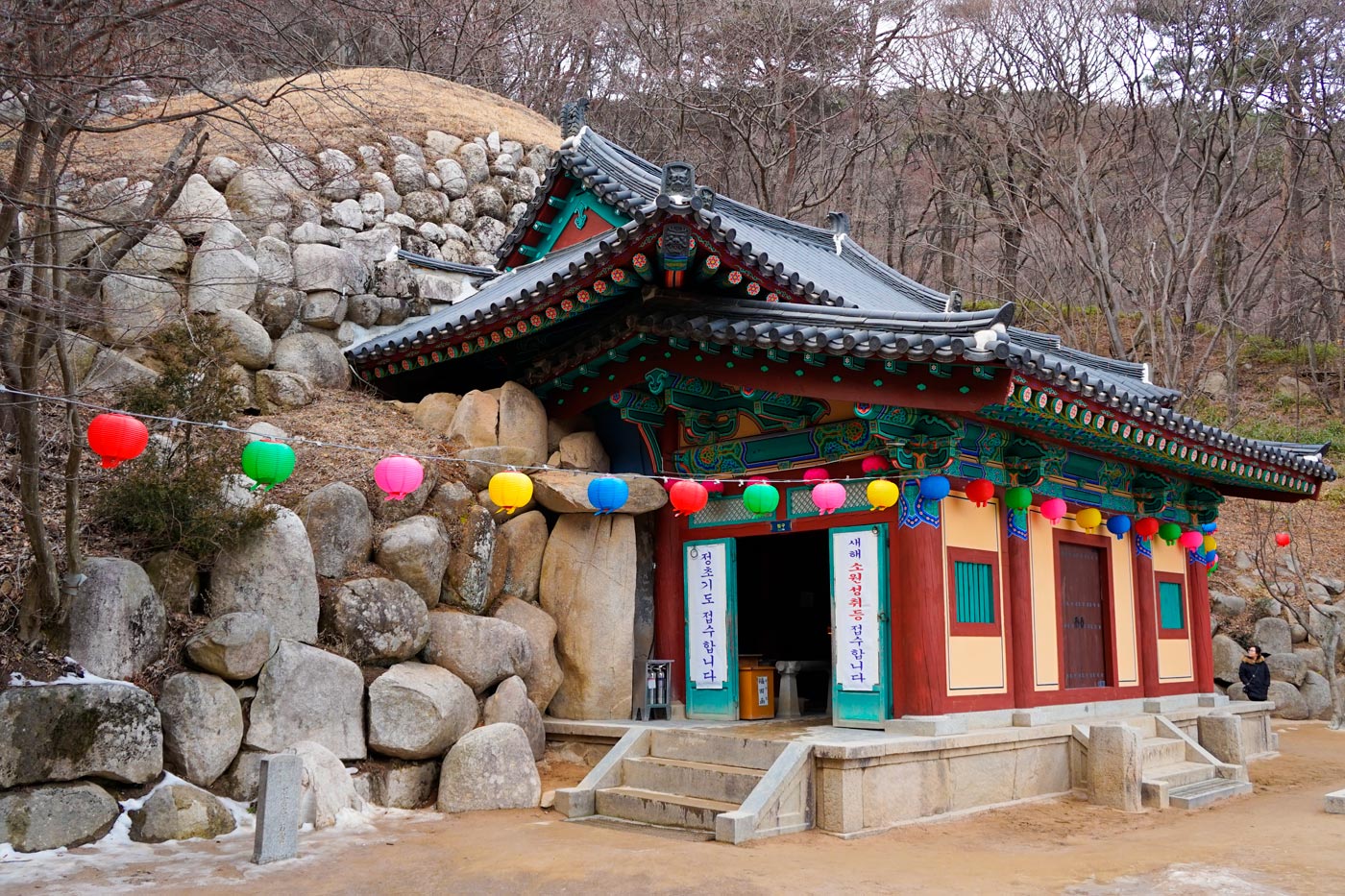
The charm of Yangdong Folk Village, a popular day trip from Gyeongju, lies in its enviable natural setting and its remarkable state of preservation, despite being several centuries old.
It’s been over 500 years since the village was founded, and today it is recognized as a UNESCO World Heritage Site—and the best part? It’s still inhabited.
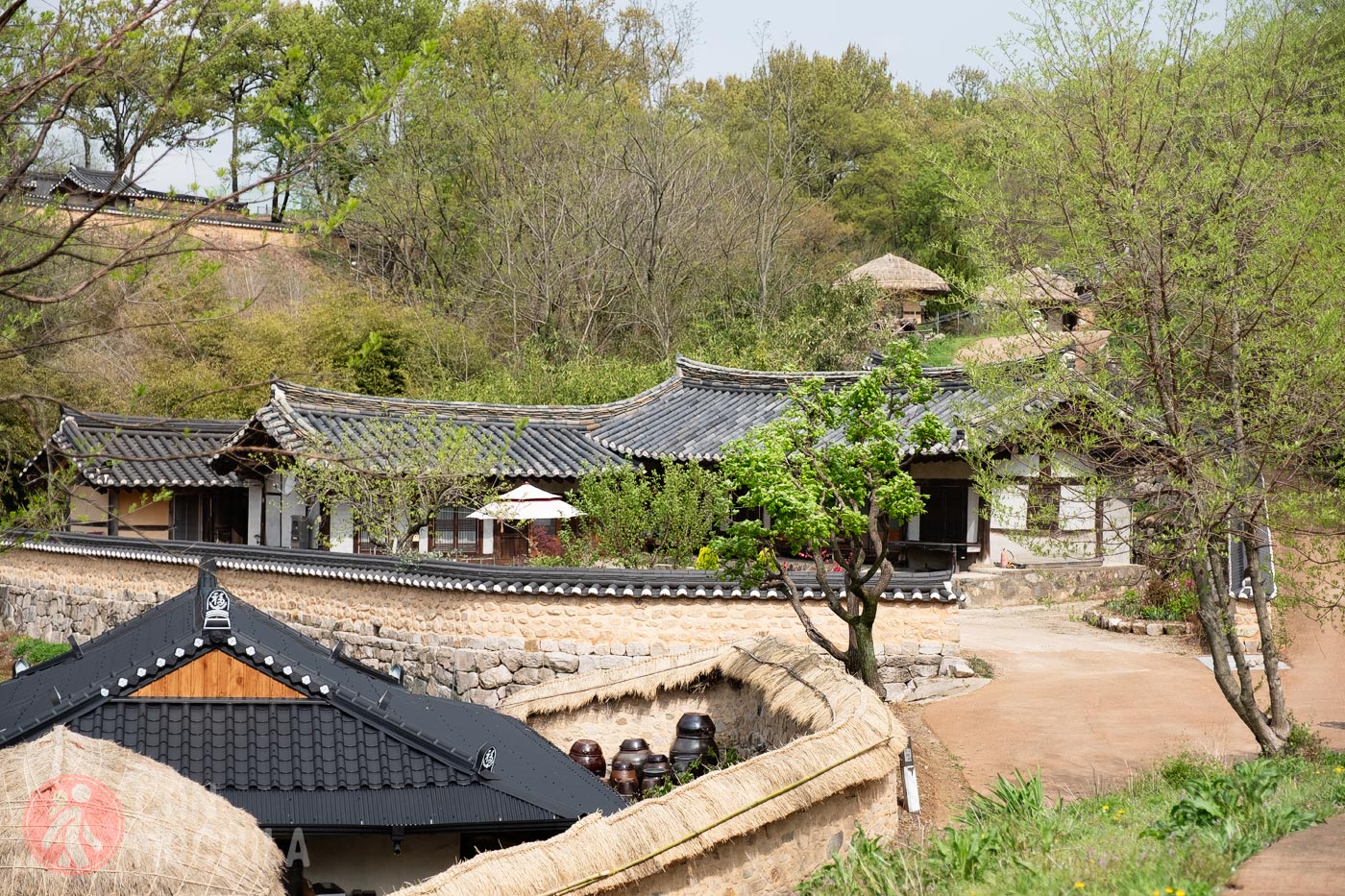
The best way to enjoy your visit is to stop by the visitor center first, where you’ll receive a map, learn about the various neighborhoods, and get directions to the most notable buildings, such as the local school and the large houses once occupied by clan leaders.
If you prefer visiting the village with a local guide, try this Yangdong village & Gyeongju Unesco Site Private Van Tour.
As you can see, there are plenty of things to see in Gyeongju, and if you add to that a city center filled with cafés, bars, and a wide range of restaurants, you’ll realize that you need at least a couple of days to fully enjoy it.
And if you also plan to visit the temple, the grotto, and the surrounding village, three nights might not even feel like too much.
Have a great trip!